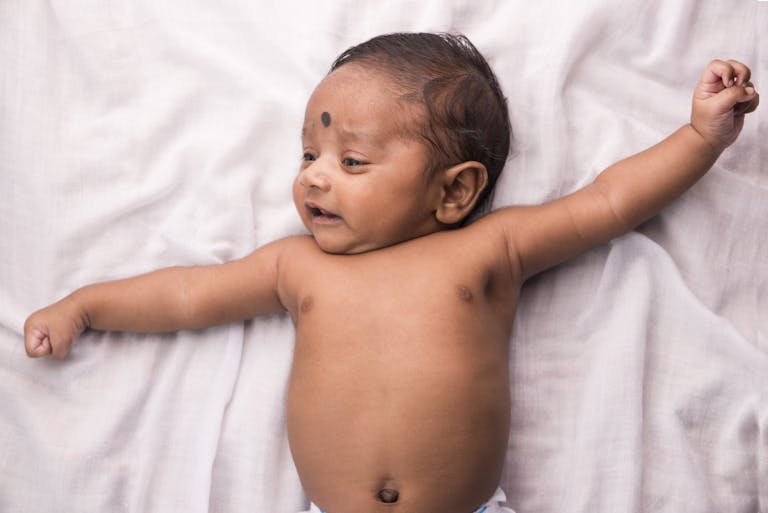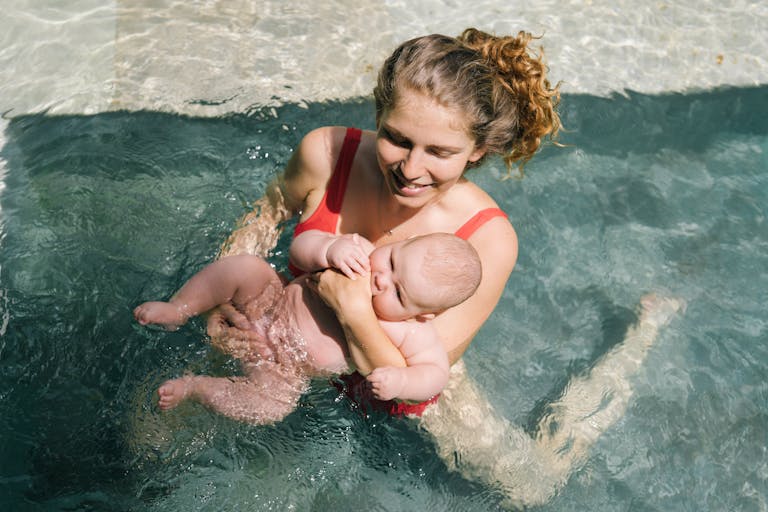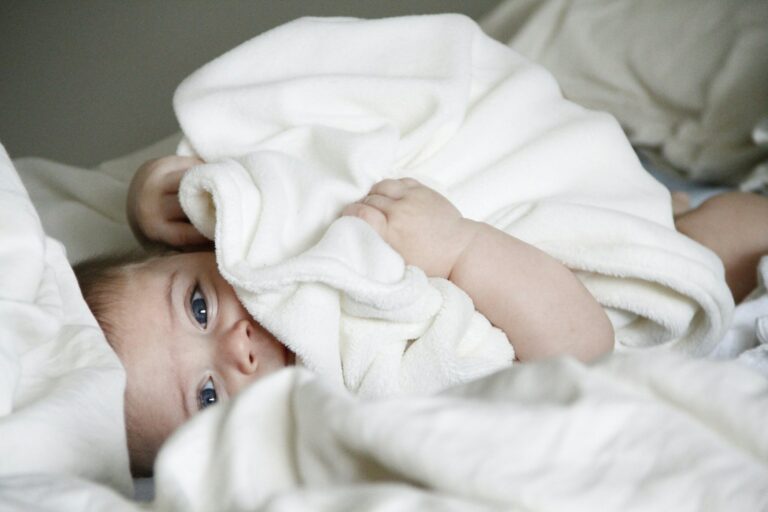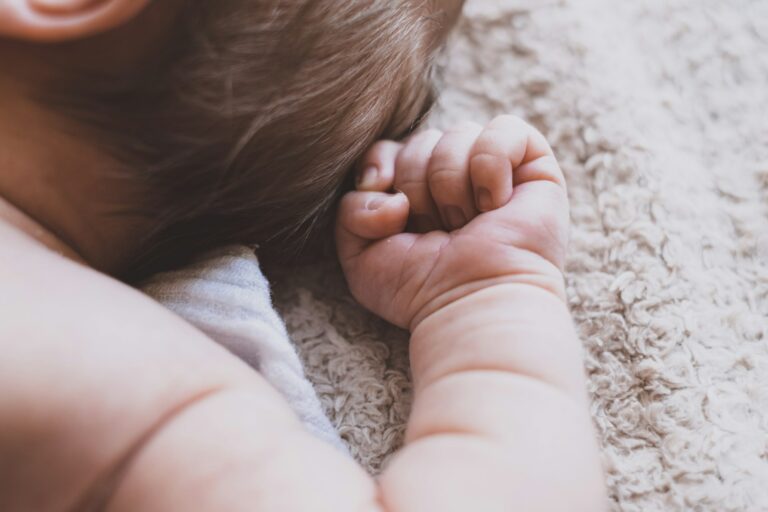Spotting a baby rash—red patches blooming across a tender cheek, tiny bumps pebbling a chubby thigh, or dryness etching delicate arms—can trigger a cascade of questions for any parent. Sometimes, the unpredictably fragile skin of a baby seems to react to everything: diapers, drool, detergent, new food, or even a change in weather. Is this just an everyday irritation? Or is something more complex unfolding? As parents juggle sleepless nights and swaddled days, the emergence of a baby rash can feel overwhelming. Sound familiar? The good news: most rashes are easily treated, and you can do a lot to support your baby’s comfort. Ahead, explore why baby rashes are so prevalent, when to be vigilant, and how medical science guides decisions at home and in the clinic.
What Is a Baby Rash: Skin Clues Every Parent Should Know
Envision the layers of a baby’s skin: thin, exquisitely sensitive, unaccustomed to the rush of everyday life. This makes their skin more susceptible to irritation, allergens, and microbial invaders. A baby rash refers to any visible change on this sensitive canvas—think redness, papules, blisters, or scaly patches. While the sight of a sudden eruption can unsettle even seasoned caregivers, it often signals the skin’s transitional adjustment to new irritants, environmental factors, or mild illness.
Some rashes—like diaper rash—settle exclusively in areas exposed to moisture and friction, while others, such as eczema, may roam across elbows, knees, or the cheeks of predisposed infants. Sometimes, an infectious foe is involved; impetigo (a bacterial rash with honey-colored crusts) or hand, foot, and mouth disease may swiftly spread through nurseries. Each baby rash conveys a different story, partly written in genetics and partly in daily life.
Most Common Types of Baby Rash: Patterns, Triggers, and What to Watch For
A dizzying array of rashes can bewilder parents. Below, the main contenders:
- Diaper dermatitis (diaper rash): Moisture, ammonia, and rubbing from diapers produce reddened, sometimes raw patches. Yeast can complicate the picture, especially with longstanding redness or satellite spots.
- Eczema (atopic dermatitis): Dry, intensely itchy, inflamed skin tied to genetics and environmental triggers (dust mites, wool, certain soaps).
- Cradle cap (seborrheic dermatitis): Greasy, yellowish scales flake across the scalp, sometimes with mild redness.
- Baby acne: Clusters of tiny pimples—often white or red—dot newborn cheeks, resolving with time.
- Heat rash: Tiny, translucent bumps (miliaria) rise in hot, sweaty conditions, especially within skin folds.
- Contact dermatitis: Redness or blisters mark areas touched by soaps, wipes, or synthetic fabrics.
- Urticaria (hives): Transient, intensely itchy welts linked to allergies—sometimes in response to food, medication, or viral illness.
Some rashes follow viral processes: chickenpox (vesicles on a red base), roseola (fever with a lacy rash afterward), or measles (spreading fever and cough with rash). Still others, like milia (tiny white cysts), look alarming yet need no treatment.
Why Do Baby Rashes Happen? Examining Causes and Triggers
Unraveling the reason behind a baby rash demands a keen eye and a thoughtful approach. Sometimes the skin’s response is simply the result of everyday exposure to moisture—from diapers, spit-up, or pooled sweat. Other times, environmental irritants such as scented detergents, bath additives, or synthetic clothing provoke the skin’s defense mechanisms. Here are key pathways that drive baby rash development:
- Prolonged dampness: Diapered zones, neck rolls, and areas under bibs are highly susceptible.
- Friction: Movement against bedsheets, overdressed layers, or cleaning wipes can all provoke irritation.
- Allergic tendencies: Some infants react strongly to ingredients in soaps, lotions, or foods (cow’s milk, eggs), resulting in hives, eczema, or angioedema (deeper swelling).
- Climate and heat: High temperatures, bundled clothing, or fever can spark a sweat-driven heat rash.
- Microbial triggers: Viruses, bacteria, and fungi (candida/yeast) have distinct rashes, each with telltale signs.
Occasionally, a genetic background primes the immune system for eczema or other inflammatory conditions. Babies battling immunodeficiencies can face persistent, severe rashes that require careful medical investigation.
Symptoms and Red Flags: Reading the Language of Baby Rash
Your baby cannot articulate discomfort with words. Instead, their skin “speaks.” Watch for:
- Widespread or focal redness: Sudden or insidious onset.
- Papules, vesicles, or pustules: Bumps that may ooze, crust, or multiply.
- Dryness and fissuring: Areas that become thickened or cracked with scratching.
- Itching: Persistent fussiness, rubbing, or difficulty sleeping may signal pruritus.
- Systemic symptoms: Fever, lethargy, poor feeding, or swelling demand urgent medical evaluation.
Some rashes cluster in distinctive patterns: contagious conditions such as chickenpox or impetigo follow characteristic distributions. Others, like contact dermatitis, precisely respect the spot where an irritant has touched the skin.
Making Sense of the Rash: Home versus Medical Attention
Parents often oscillate between benign neglect and panic. Don’t worry if you feel unsure; distinguishing the mundane from the serious is nuanced.
- Non-contagious baby rashes tend to remain localized, evolve slowly, and rarely induce systemic symptoms. Diaper rash, eczema, and cradle cap fall neatly into this camp.
- Contagious rashes—impetigo oozing golden crusts, chickenpox blisters, ringworm’s circular lesions—require medical assessment and sometimes exclusion from group settings.
Quick guide:
- Sudden rash plus fever, swelling, or altered consciousness? Seek immediate care.
- Persistent, spreading, or weeping rashes merit medical input.
- Soft, short-lived rashes without systemic illness? Likely manageable at home.
Doctors use careful history (onset, exposures, family history), physical inspection, and occasionally skin swabs or blood tests to clarify the diagnosis.
Baby Rash Treatment: Practical Steps and Medical Science
Sometimes the simplest measures transform a red, inflamed patch into calm, restored skin. Start here:
- Fragrance-free cleansers: Strip away potential irritants.
- Barrier creams containing zinc oxide or petrolatum: Shield against moisture.
- Emollient moisturizers: Combat dryness, especially if eczema is present.
- Frequent diaper changes and snippets of diaper-free time: Essential for managing diaper rash.
- Cool baths and loose clothing: Bring swift relief to heat rash and prevent further irritation.
- For signs of bacterial or fungal infection (yellow crusting, persistent redness, mushroom-like rash), prescription treatments may be necessary—antibiotics or antifungal creams as advised.
- Anti-itch strategies: Clip nails, use mittens, and apply cool compresses. If itching is severe and persistent, antihistamines may be recommended, but consult a pediatrician first.
Important: Never apply strong steroids or over-the-counter products not formulated for babies without medical guidance.
Preventing Baby Rash: Habits that Support Healthy Skin
Prevention merges science and daily routine. Strategic decisions now can spare discomfort later:
- Cleanse gently. Avoid scrubbing or abrasive washcloths.
- Use sensitive-skin-approved products (dye- and fragrance-free) for both skincare and laundry.
- Restore moisture after each bath; emollient creams should be a fixture near the changing table.
- Allow the skin to “breathe”—loose cotton clothes trump synthetics or layered swaddling.
- Change diapers frequently, using warm water or hypoallergenic wipes, and introduce periods of diaper-free time.
- Watch for new foods or products, introducing only one at a time so that triggers are easier to spot.
- Keep bedrooms well-ventilated and avoid overheating.
- Record any persistent patterns; if the baby rash keeps returning, consider dietary or environmental causes. Discuss these concerns with a pediatrician or dermatologist for tailored recommendations.
Everyday Guidance: Supporting a Baby with a Rash
Every rash tells a story, and every baby responds differently. Here are strategies that help many families:
- Dress your baby in soft, breathable fabrics and avoid overdressing.
- Soothe irritable skin with short, lukewarm baths and fragrance-free oils or creams afterward.
- Monitor for secondary infection: redness spreading beyond the initial rash, pus, or fever.
- Record and photograph the rash’s evolution—helpful for medical consultations.
- Trust your observations; if your child appears unwell or symptoms intensify, reach out to your healthcare provider.
Key Takeaways
- Baby rashes are a frequent feature of infancy, reflecting skin sensitivities and daily exposures.
- Most rashes—diaper rash, heat rash, eczema, or hives—respond well to gentle hygiene, barrier creams, and avoidance of irritants.
- Watch for warning signs: fever, swelling, lethargy, or rapidly spreading redness signal the need for urgent evaluation.
- Gentle routines and attentive monitoring are foundational for preventing and treating baby rash.
- For guidance adapted to your child’s specific needs, or questions about persistent or unusual symptoms, health professionals remain invaluable allies.
- Discover extra resources and personalized support by downloading the Heloa app, featuring free health questionnaires and expert advice for your child.
When facing a baby rash, knowledge, vigilance, and kindness combine to protect the littlest members of the family—one patch at a time.
Questions Parents Ask
How can I tell if my baby’s rash is due to an allergy or something else?
Distinguishing an allergic rash from other causes can be tricky, mais rassurez-vous, beaucoup de parents rencontrent cette question. An allergic reaction often appears suddenly after contact with a new food, product, or material (like a new detergent or certain fabrics). The rash may be red, raised, or form hives, sometimes spreading quickly. Other signs may include swelling around the eyes or mouth, or your baby acting more uncomfortable than usual. However, rashes from irritation or mild viral infections may seem more localized and develop slower. If you’re uncertain about the cause or notice any rapid swelling or difficulty breathing, il est essentiel de consulter un professionnel de santé rapidement. In other cases, observing recent changes and discussing them with your pediatrician can help clarify the situation.
What home remedies can help soothe my baby’s rash?
Many parents look for gentle ways to comfort their baby’s skin at home. You can try using lukewarm baths (sometimes with a bit of colloidal oatmeal) to reduce irritation and calm redness. Pat the skin dry softly, avoiding any scrubbing. Applying a fragrance-free, hypoallergenic moisturizer or a zinc-based barrier cream can help shield and hydrate delicate skin. Opting for loose, cotton clothes and keeping the skin cool may also prevent further irritation. N’hésitez pas à donner à votre bébé quelques moments sans couche pour laisser la peau respirer. S’il y a la moindre inquiétude concernant une possible infection ou si les rougeurs persistent, demandez conseil à votre professionnel de santé.
When should I seek medical attention for my baby’s rash?
It’s normal to wonder when a rash requires more than home care. Il importe de consulter rapidement dès qu’un bébé présente, en plus d’une éruption, une fièvre, une gêne notable, des difficultés à respirer, ou si la zone devient enflée ou douloureuse. If the rash spreads quickly, develops blisters, oozes, or is accompanied by changes in your child’s behavior (such as lethargy or refusing to eat), a medical consultation is warranted. Même pour des symptômes moins alarmants, il n’y a jamais de mal à demander l’avis d’un professionnel si vous vous sentez inquiet ou si le doute persiste. Chaque parent mérite d’être rassuré.
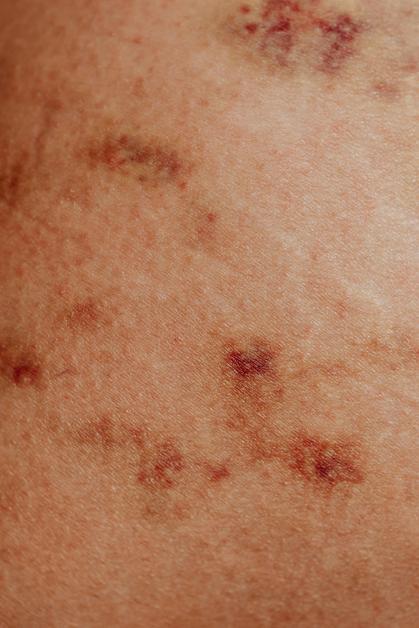
Further reading:



